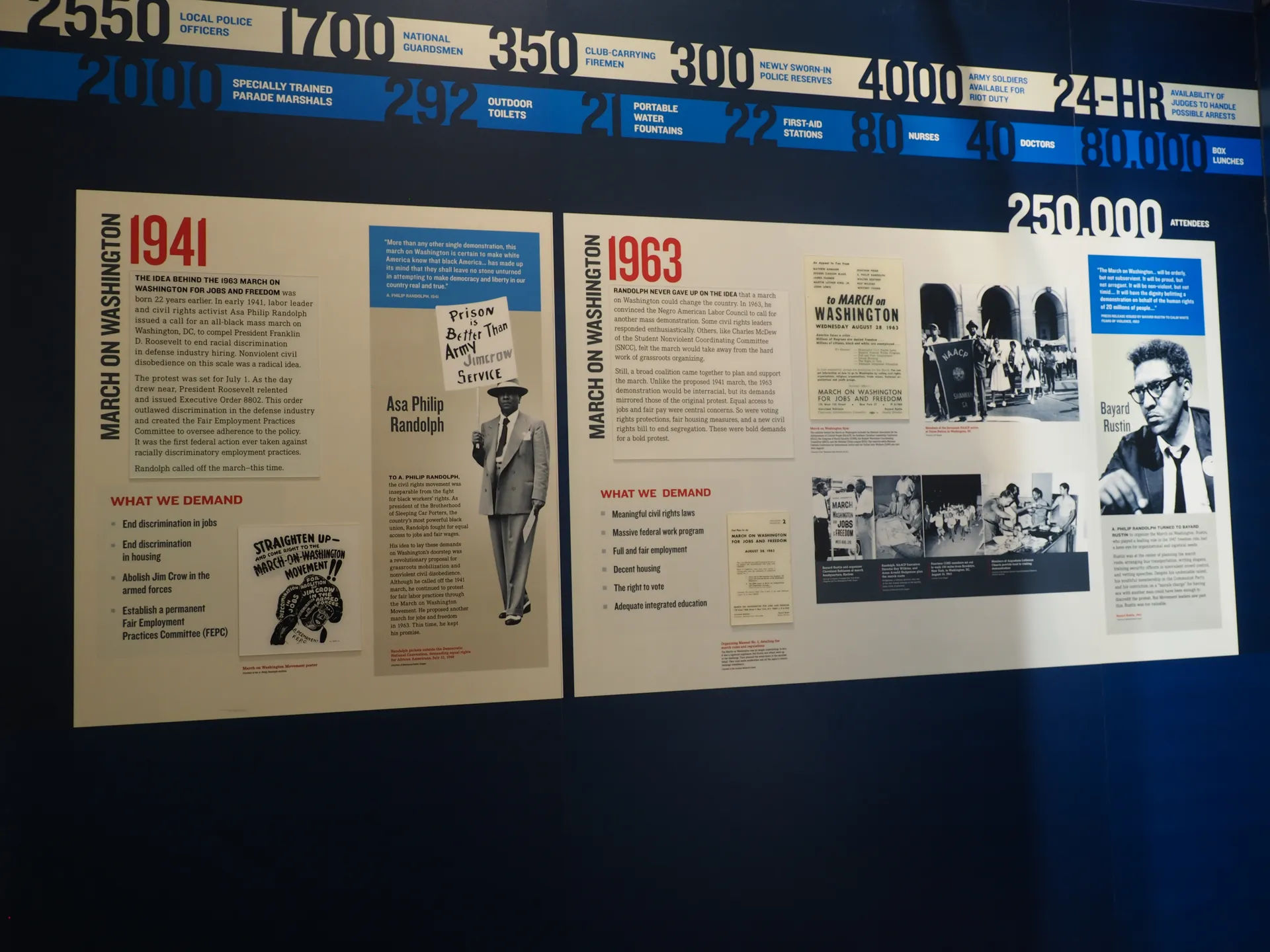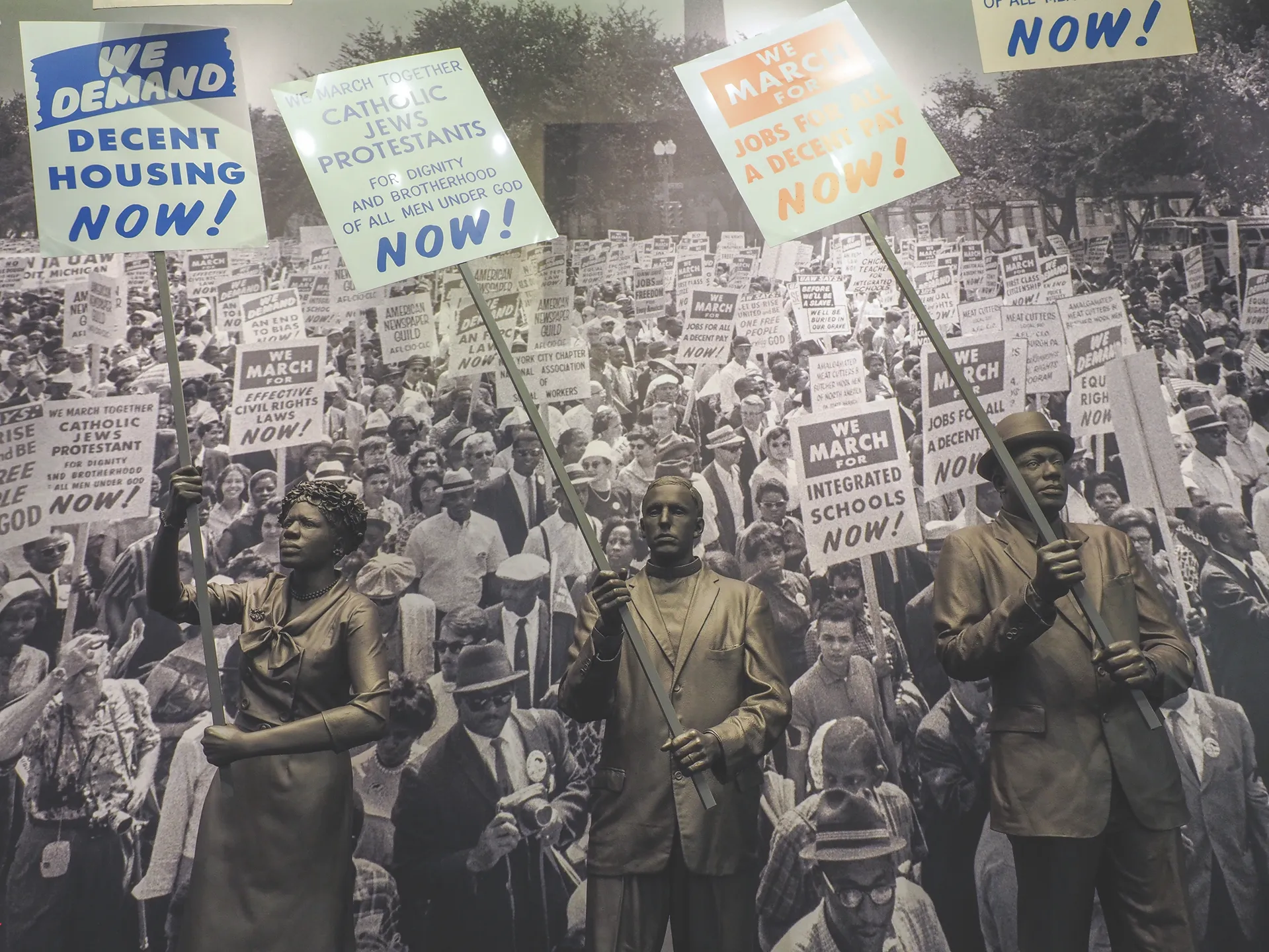“We cannot walk alone. And as we walk, we must make the pledge that we shall always march ahead. We cannot turn back.”
? Martin Luther King Jr.
Sixty years ago, one of the “greatest demonstrations for freedom in the history of this country” took place on the Washington, DC Mall, according to Dr. Martin Luther King, Jr. The magnitude of this campaign was not lost on him, even before he was prompted to eloquently transition to his famous speech, “I Have a Dream.” No one expected over 250,000 protestors to show up, but they knew that if they planned to stand up for equality, jobs, and freedom, Washington, DC was the place to be on August 28, 1963.
The March on Washington of 1963 wasn’t the first time a large-scale demonstration in DC was planned by labor leader A. Philip Randolph and master strategist Bayard Rustin. During World War II, the organizers were disillusioned by the hiring in the defense industry and the treatment of Black men valiantly serving in a segregated army, so they threatened a DC demonstration. The 1941 march was called off after President Franklin Roosevelt acquiesced with Executive Order 8802, which outlawed racial discrimination in military employment practices. In 1957 a Prayer for Pilgrimage and Freedom took place on the third anniversary of the passage of the landmark Brown v. Board of Education.
Yet in 1963, one hundred years after the signing of Lincoln’s Emancipation Proclamation, America had not dealt with racist policies that failed to grant Black Americans equal access to jobs, fair pay, voting rights, fair housing, and an end to segregation. This time, the march was epic, banding together the support of Hollywood celebrities and leaders of labor, civic, faith, and human rights organizations in a peaceful protest. At this scale, the event was radical for its time as the media covered the national spectacle only to broadcast the country’s international shame of violent racial terrorism weeks later.

Tragedy after tragedy, America demonstrates it has the resourceful fortitude to exercise political will for the greater good when pressed to do so. As a self-ascribed, exceptional model of democracy, this country must decide if it will lead proactively or reactively when it comes to civil and human rights.
The First Amendment rights to free speech, freedom of the press, and freedom of assembly expressed during the March on Washington are not the only weapons for social change. Today the arsenal is amplified through 24-hour digital and social media, but the toolkit for liberation was assembled centuries ago when the first enslaved humans arrived in this nation. They included revolts, escape, protest, community empowerment, defiance, and resilience. This nation has risen from the ashes of a civil war by rebuilding. It’s time we defy the traditional waves of violence by ensuring all boats rise successfully and equitably.
What if we envisioned stronger communities with access to affordable housing, excellent schools across neighborhoods, exceptional health care not tied to employment, clean water and air despite zip codes, and adequate living wages for all? What if access to the ballot was protected with the same vigor with which it is now suppressed? What if leaders not only addressed these issues during campaigns but, with merit or consequences, were held accountable within the offices they were elected to serve?
In 2023, this country is again at a strategic crossroads. It must reckon with being true “to what [it] said on paper,” as Dr. King exhorted in his last speech, “The Mountaintop.” Let’s be courageous to imagine an America that writes a new story, a greater plan, one that empathetically and authentically celebrates our cultures, identities, and complexities. These diverse characteristics are truly what make this country one of the greatest nations on earth.
